“You don’t create much nowadays,” says Adelaide-born chef Andre Ursini, MasterChef alumnus and the man behind Andre’s Cucina and Polenta Bar. “We didn’t create it,” he says matter-of-factly, speaking to Broadsheet about his 100-layer lasagne.
“It’s owed to Mario Batali,” a celebrity chef who runs an upmarket Italian restaurant in New York City – Del Posto. “This is my interpretation of his dish,” says Ursini.
When his Frome Street eatery opened nearly seven years ago, it was a trailblazer in Adelaide’s wave of shared European cuisine. And it’s this constant reinvention that calls for dishes such as the 100-layer lasagne. “Every week we play around with different things,” says Ursini, referring in part to the work of his research and development chef, Laura Cassai.
“Lasagne’s a celebratory dish in our family,” says Ursini. But this is a far cry from what Nonna brings to the table. Only a part of his repertoire since mid-2016, the 100-layer lasagne has a three-or-four-day turn-around time. We visit his Prospect test kitchen to take a look at how the labour-intensive dish comes together.
THE PASTA
A good lasagne rests on the quality of its fresh pasta sheets. Ursini and his team use the “same recipe [as for] normal pasta”, though it’s laminated a bit more, he says. It’s a process that involves folding the dough into a smaller parcel and feeding it back into the pasta machine.
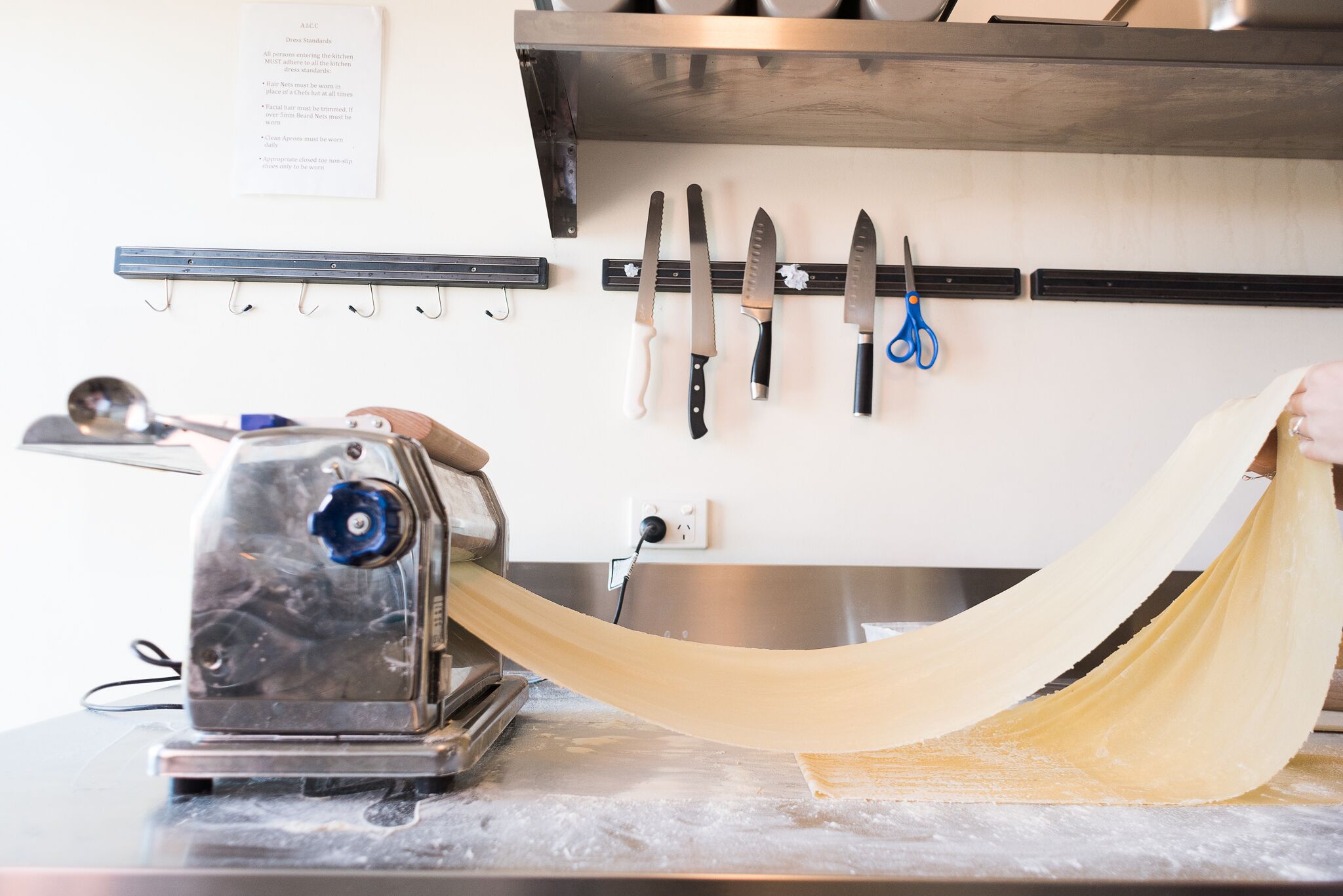
“You’ve got to roll [each sheet] to get it as thin as possible,” says Cassai. Working each pasta sheet to “translucence” requires discipline. “That’s the art of pasta-making,” says Ursini. “There’s a fine line between it breaking and it being delicate in the mouth.”
Despite its name, the “100-layer” lasagne doesn’t actually contain 100 pasta sheets. “It’s probably about 60 or 70,” says Ursini. “It depends how disciplined our chefs are, ‘cause it’s so labour-intensive.” The rest of the layers include bolognese, béchamel and cheese.
THE SAUCES
Next come the binding agents: bolognese and béchamel. Because the dish is so delicate, Ursini’s bolognese is not heavy or rich. Rather, “as white as possible … slightly blushing with tomato.” “There’s [also] a slight smokiness from the pancetta, which we pound out,” he says.
Ground in-house, the mince has to be “really fine”. “Think about all those really light pasta sheets that have to layer on top of each other,” says Ursini. “You can’t have chunks [of mince].”
Given it’s so pasta-heavy, the lasagne needs a secondary sauce component. Incorporating a white sauce – like a béchamel – allows the flavours of the dish to “sing more” says Ursini.
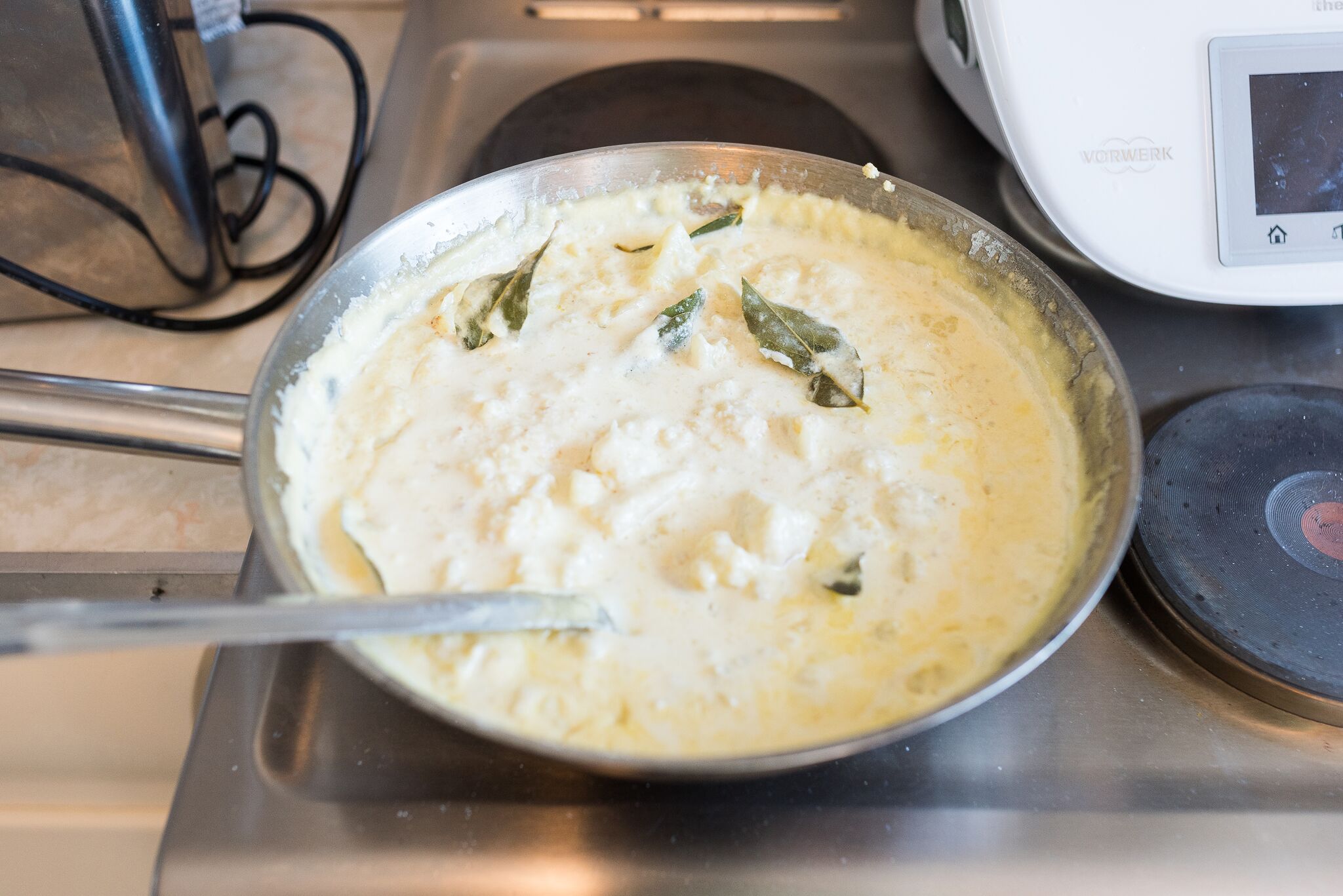
“We play around with [the béchamel],” he says. Most recently, for Mother’s Day, he used a cauliflower béchamel: cauliflower is boiled with milk to create a puree that’s then folded into the sauce. He’s also experimented with a béchamel infused with imported white truffles from Alba, Italy. “We threw costings out the window for that one,” he says, laughing.
ASSEMBLY
Each pasta sheet is blanched in hot water, then shocked in cold water prior to layering. “It’s easier to have it all cooked off before [assembly],” adds his chef, Laura Cassai. It expedites the already-tedious assembly process in which, “Every component goes on every layer … like a traditional lasagne, but we put a lot less.” A small amount of grated mozzarella and Parmigiano cheese is also scattered in-between layers.
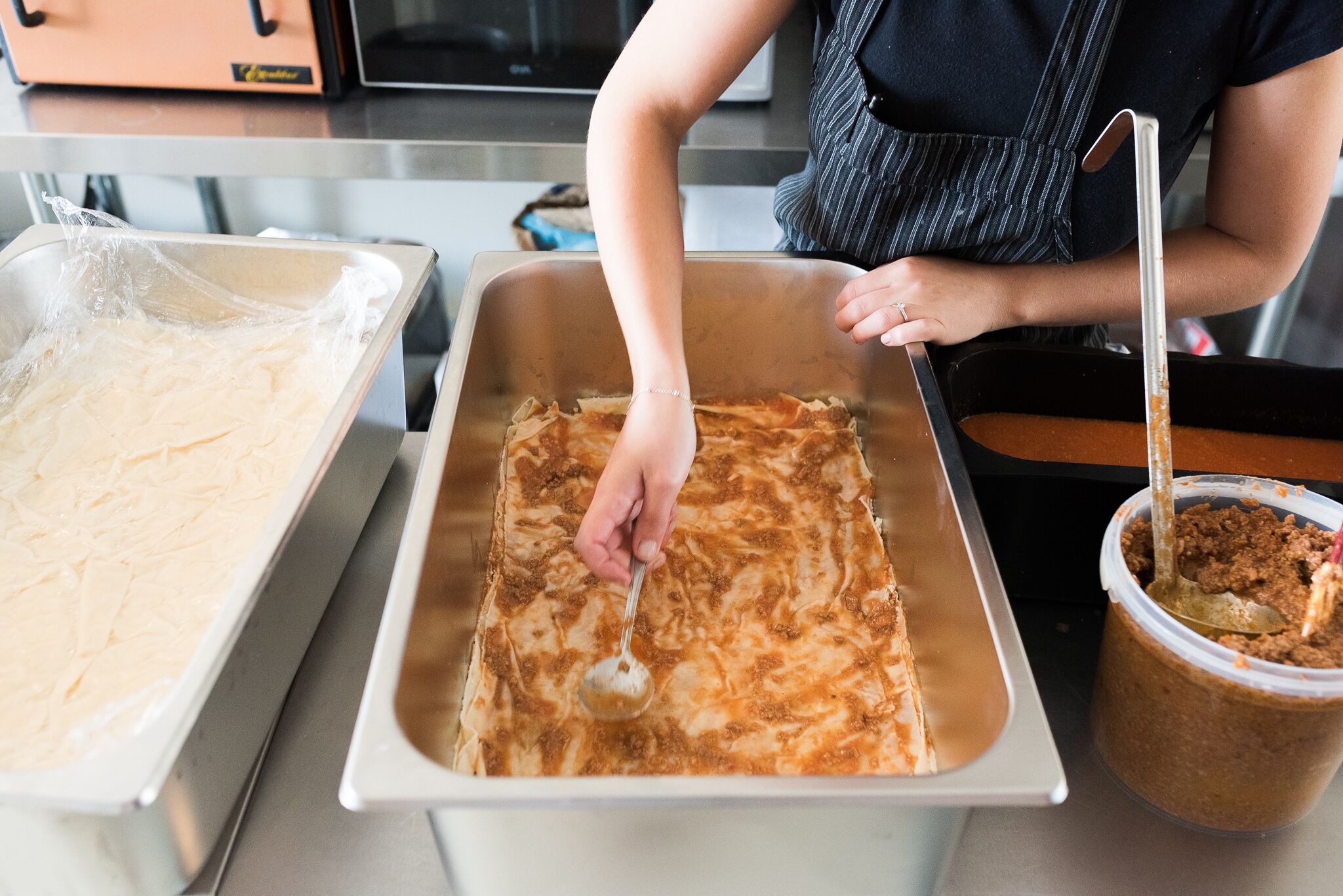
SERVING
This is where Ursini’s interpretation diverges most from Batali’s. “They [at Del Posto] fry the top off in ghee [clarified butter] … and serve it in a pool of rich red sugo,” says Ursini. “It’s got this Americanism about it; it’s meant to remind you of when you were a kid and Nonna [gave] you the edge of a crunchy lasagne.”
“I’ve eaten it so many different ways,” says Ursini, who used to serve the lasagne fried-off. “I would be at home and I’d just warm it up in the oven, and it eats better; I can taste the flavours better. You’re doing all this refined [work]… and then frying the shit out of the top of it.”
When asked if he’ll serve it fried-off again, “No, I think that’s done. We’re serving it based on what we’ve learnt in the past and how we think it eats better.”
Before serving the lasagne is cold-set in the fridge and then turned out on the bench. “We trim up the sides, the off-cuts… eat them,” Ursini adds, laughing. “Then it’s portioned ready for service.”
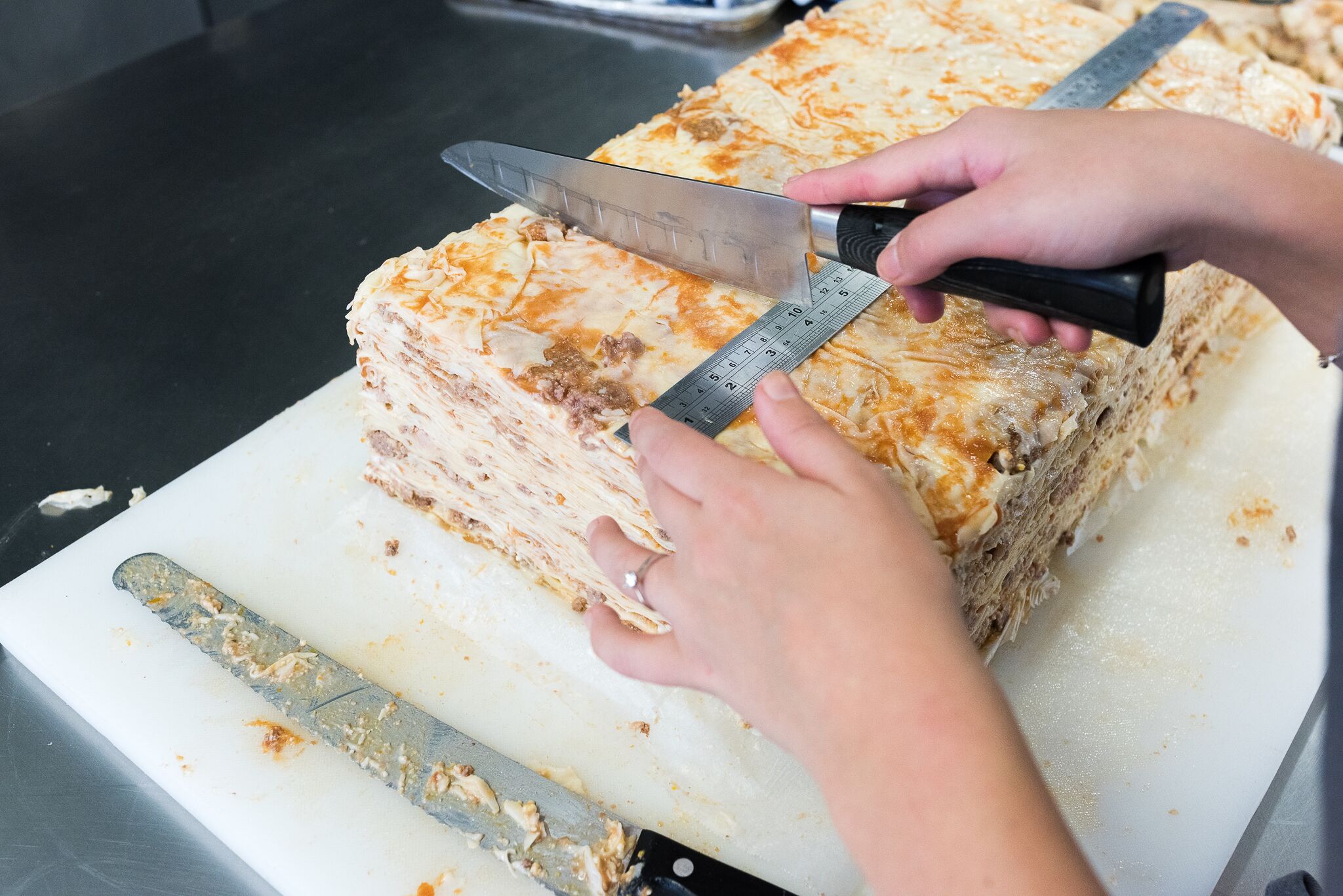
There’s no crunch on the finished product. It’s warmed through in the oven, portion-by-portion, preserving the subtle flavours of the béchamel and bolognese. Serving the lasagne in sugo, “It becomes all about that tomato-y flavour and not the nuances of the pasta dish,” he says. Instead, his version is served in a pool of béchamel.
While it’s “whipped out on special occasions,” the 100-layer lasagne is known to sporadically make its way to Ursini’s restaurant. “Because we do menu fisso – which is per-head – the staff don’t sell it, it just appears on your plate.”
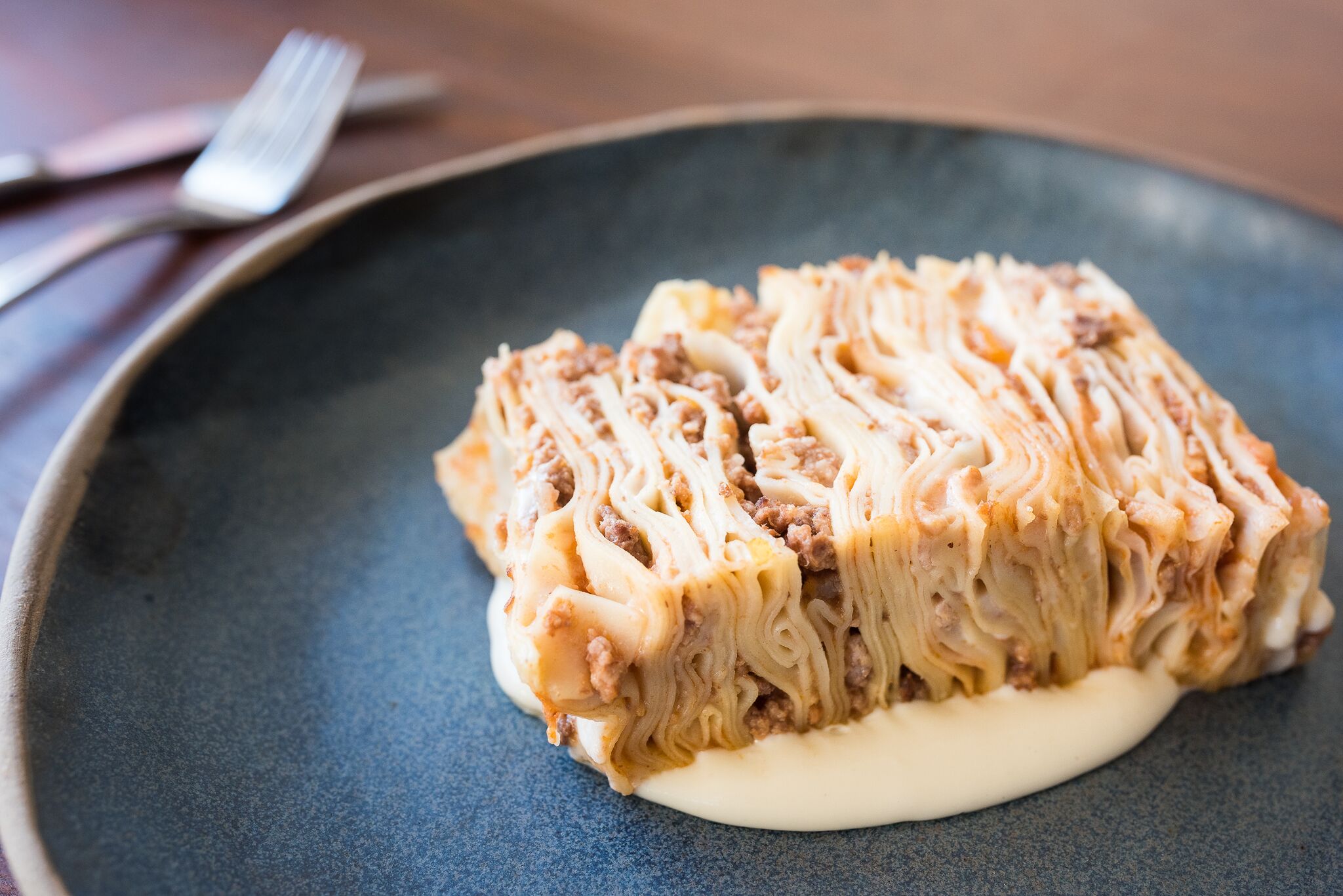
“It’ll pop up on social media,” says Ursini. But he issues a warning, “A lot of the dishes we put up … you’ve ‘gotta be there that night or the next to get them.” So if you spy the 100-layer lasagne on his social-media channels – be quick – because it’s not likely to last the night.





































